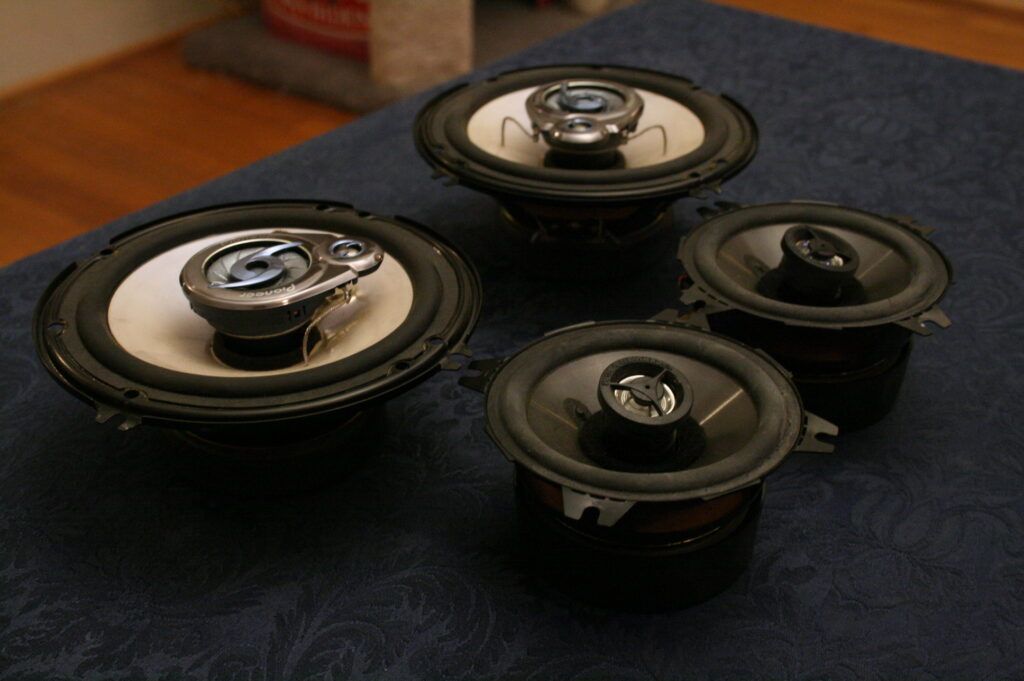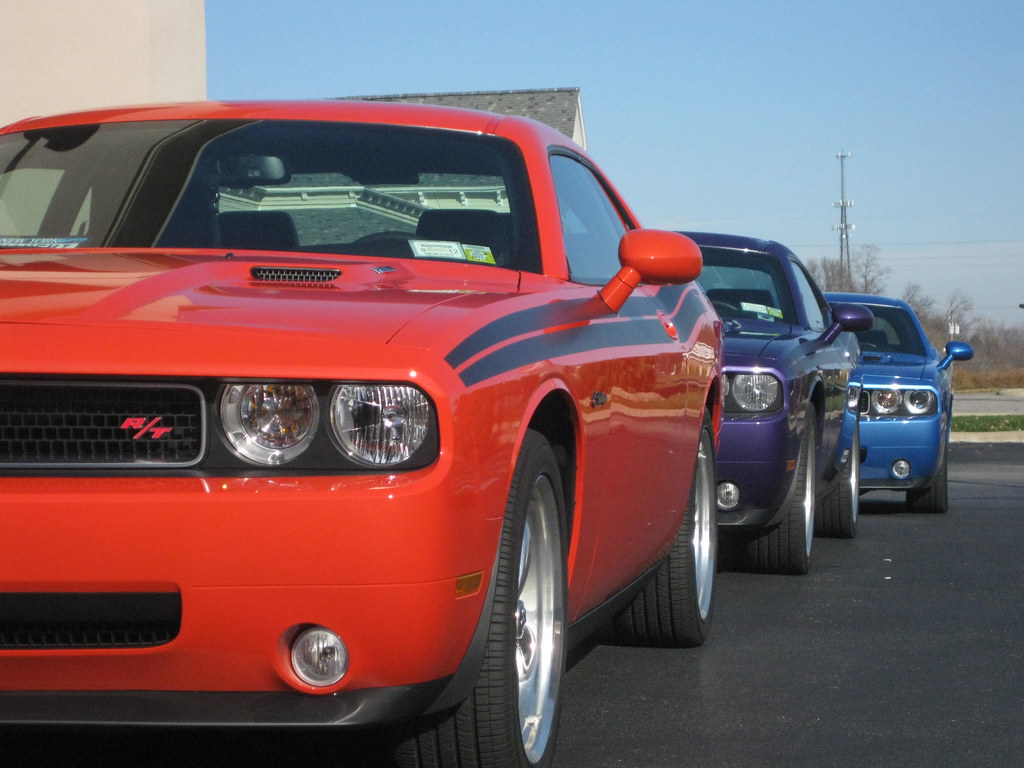
Detroit in the muscle car era was less a collection of automakers and more a battleground, where engineers waged automotive warfare. Assembly plants across the Motor City cranked out four-wheeled missiles, engaging in a brutal competition for street dominance that makes today’s horsepower wars look like a polite tea party. This wasn’t just about speed; it was about innovation, engineering brilliance, and creating cultural icons that would forever resonate with enthusiasts.
While some muscle cars achieved legendary status, many others, equally impressive in their raw power, distinctive styling, and thrilling performance, never quite received the fame they deserved. These are the unsung heroes, the hidden gems of an era defined by pushing limits and breaking records. They tell a fascinating story of ambition, engineering prowess, and sometimes, the sheer audacity of what could be built when passion met horsepower.
Join us as we take a deep dive into the fascinating world of these lesser-known, yet immensely significant, American muscle cars and the powerful engines that propelled them into legend. We’re going beyond the usual suspects to shine a spotlight on the machines that might have faded from mainstream memory but continue to rev the hearts of true enthusiasts, proving that sometimes, the most dangerous predators are the ones that don’t look threatening.
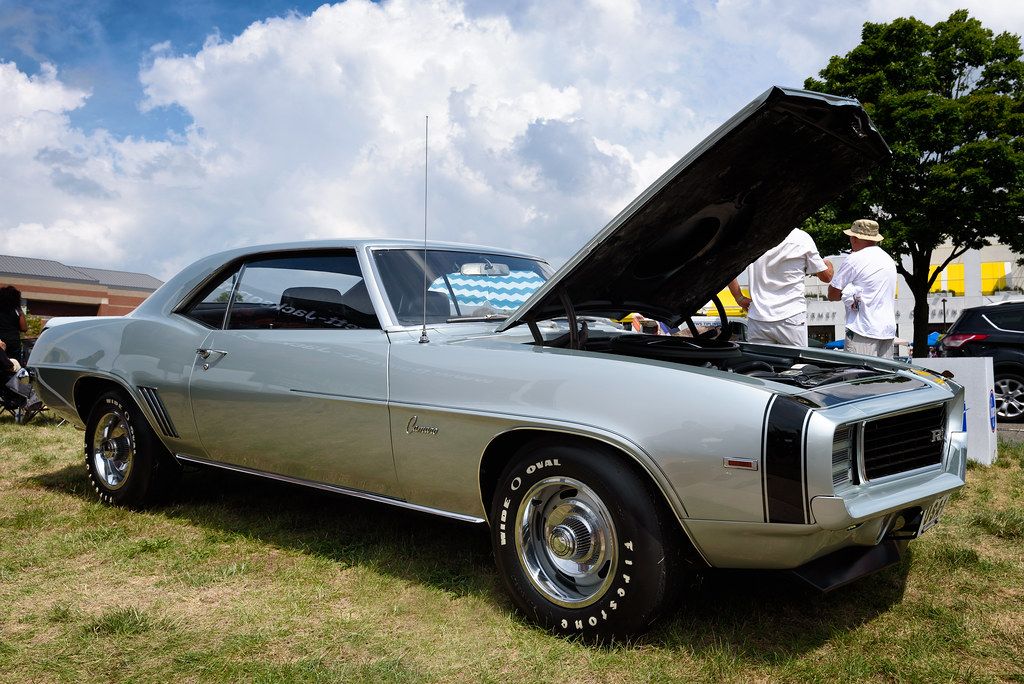
1. **1969 Chevrolet Camaro ZL1**: The ZL1 Camaro stands as a testament to Chevrolet’s audacious engineering and a prime example of a factory drag car born from a loophole. Just 69 of these beasts were built through Chevy’s COPO (Central Office Production Order) system, which was originally intended for ordering fleet vehicles with specialized features. However, a few savvy dealers recognized its potential to create high-performance Camaros that Chevrolet never officially planned for mass production. This system essentially birthed factory drag cars complete with full warranty coverage, making them the ultimate automotive wolf in sheep’s clothing.
The exterior of the ZL1 was incredibly understated, hiding the most powerful engine Chevrolet had ever installed in a production car. It appeared like a regular Camaro, keeping serious secrets from its neighbors with no flashy graphics or aggressive styling cues to announce the all-aluminum 427 lurking beneath the hood. Chevrolet’s engineers understood that sometimes the best weapon is the one nobody sees coming, and the ZL1’s sleeper status only added to its mystique and legend among those in the know.
Underneath that unassuming hood was the all-aluminum 427 engine, officially rated at a conservative 430 horsepower. However, actual output likely approached a staggering 550 ponies, providing performance that truly rivaled dedicated race cars. This incredible power enabled quarter-mile runs in approximately 11 seconds with minimal modifications, delivering factory drag racer performance straight from the showroom floor. The ZL-1 engine itself was originally designed for the Chaparral racing team to use in Can-Am competitions, highlighting its purebred racing lineage.
The ZL1 came with a substantial price premium, costing over $7,200 in 1969—an amount equivalent to about $60,000 today—which was twice as much as a standard Camaro. This high price tag naturally limited sales, contributing to its extreme rarity and solidifying its position as perhaps the most potent factory Camaro ever produced. Today, the 1969 COPO Camaro, particularly the ZL-1 models, is one of the most sought-after muscle cars in history, with auction prices often reaching around $400,000, a testament to its legendary status and the unique story behind its creation.
Car Model Information: 2018 Chevrolet Camaro 1LS
Name: Chevrolet Camaro
Manufacturer: Chevrolet
Production: 1966–2002,2009–2023
ModelYears: 1967–2002,2010–2024
Class: Pony car
BodyStyle: coupe,convertible
Platform: GM F platform,GM Zeta platform,GM Alpha platform
Layout: Front-engine, rear-wheel-drive layout
Categories: 1970s cars, 1980s cars, 1990s cars, 2+2 coupés, 2000s cars
Summary: The Chevrolet Camaro is a mid-size American automobile manufactured by Chevrolet, classified as a pony car. It first went on sale on September 29, 1966, for the 1967 model year and was designed to compete with the Ford Mustang. The Camaro shared its platform and major components with the Firebird, produced by General Motors’ Pontiac division that was also introduced for the 1967 model year.
Four distinct generations of the Camaro were developed before production ended in 2002. The nameplate was revived on a concept car that evolved into the fifth-generation Camaro; production started on March 16, 2009.
Production of the sixth generation of the Camaro ended in December 2023, for the 2024 model year.
Get more information about: Chevrolet Camaro
Buying a high-performing used car >>>
Brand: Chevrolet Model: Camaro
Price: $18,785 Mileage: 69,196 mi.
Read more about: Navigating Your Golden Years: 12 Sports Cars Retirees Might Want to Reconsider for a Stress-Free Ride
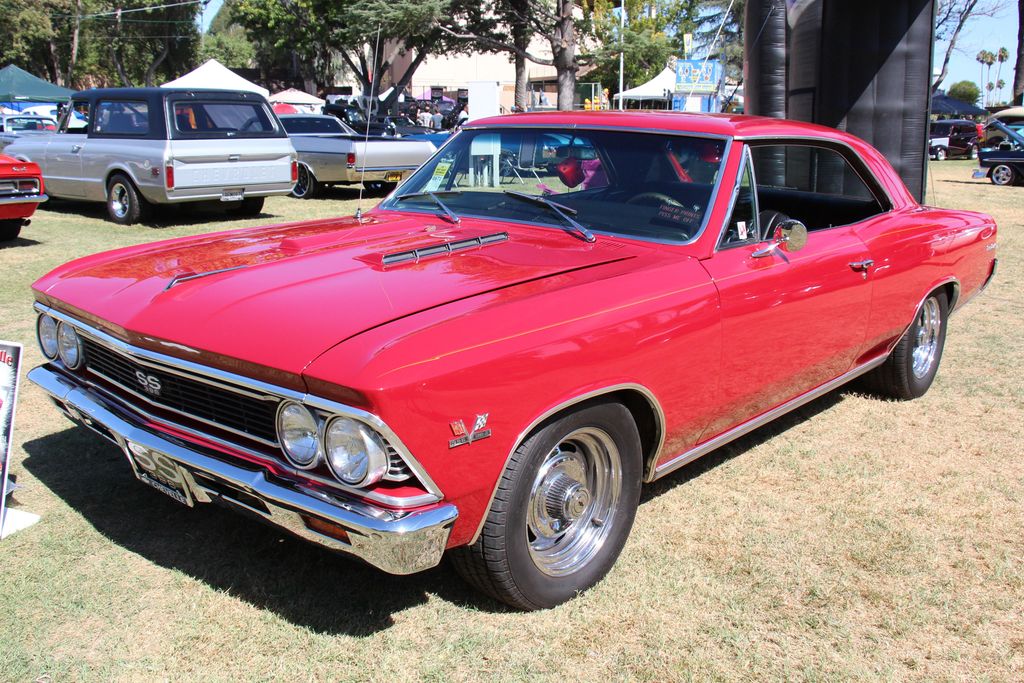
2. **1965 Chevrolet Chevelle Z16**: Before the SS396 became a household name in the muscle car lexicon, Chevrolet quietly introduced the world to big-block Chevy muscle with the exceptionally rare Z16. Only 200 of these specific Chevelles were ever built, making it an understated pioneer in the realm of high-performance intermediate cars. Its subdued styling acted as a clever disguise, concealing serious performance capabilities that only the most knowledgeable enthusiasts could truly recognize. This made the Z16 the perfect sleeper, a regular Chevelle that had been hitting the gym without bragging about its newfound strength.
The visual cues hinting at the big-block power underneath were subtle, ensuring that Chevrolet’s designers kept the aggressive styling in check. This decision underscored the idea that sometimes the most dangerous predators are the ones that don’t look overtly threatening, adding to the Z16’s allure as a discreet powerhouse. It established a foundation for future Chevelle SS models, proving that a balance between raw power and a more refined, less ostentatious appearance could be achieved, particularly in an era often defined by flamboyant automotive expression.
At the heart of the 1965 Chevelle Z16 was a potent 396 cubic inch V8 engine, officially producing a robust 375 horsepower. This impressive output enabled the Z16 to achieve 0-60 runs in just over 6 seconds, a truly remarkable feat for a car of its size and era. To manage this substantial power increase, Chevrolet wisely equipped the Z16 with upgraded suspension and brakes, creating a well-balanced package that handled as proficiently as it accelerated. This engineering foresight was critical in delivering genuine all-around capability, distinguishing it from many contemporaries that often excelled only in straight-line speed.
The Z16 remains exceptionally rare among collectors, with authentic examples being highly prized by enthusiasts who recognize its pivotal role in muscle car history. It’s a classic case where the prototype or initial limited-run model becomes more valuable and intriguing than the subsequent mass-produced versions. The 1965 Chevrolet Chevelle Z16 is not just a car; it’s a significant milestone, a testament to Chevrolet’s early foray into the big-block muscle car arena, and a cherished piece of automotive heritage that set the stage for much to come.
Car Model Information: 1969 Chevrolet Chevelle SS
Name: Chevrolet Chevelle
Caption: 1970 Chevrolet Chevelle SS 396 Sport Coupe
Manufacturer: Chevrolet
Production: 1963–1977
ModelYears: 1964–1977
Class: Mid-size
Platform: GM A platform (RWD)
Layout: FR layout
Successor: Chevrolet Malibu
Categories: 1970s cars, All articles needing additional references, All articles that may contain original research, All articles with specifically marked weasel-worded phrases, All articles with unsourced statements
Summary: The Chevrolet Chevelle is a mid-sized automobile that was produced by the Chevrolet division of General Motors (GM) in three generations for the 1964 to 1977 model years. Part of the GM A-body platform, the Chevelle was one of Chevrolet’s most successful nameplates. Body styles included coupes, sedans, convertibles, and station wagons. The “Super Sport” versions were produced through the 1973 model year and Lagunas from 1973 through to 1976.
After a four-year absence, the El Camino was reintroduced as part of the new Chevelle lineup in 1964.
From 1964 to 1969, GM of Canada sold a modified version of the Chevelle that included a Pontiac-style grille, and a LeMans instrument panel, marketed as the Beaumont.
The Malibu was the top-of-the-line model to 1972, and completely replaced the Chevelle nameplate starting with the redesigned, and downsized 1978 model year.
Get more information about: Chevrolet Chevelle
Buying a high-performing used car >>>
Brand: Chevrolet Model: Chevelle
Price: $119,550 Mileage: 93 mi.
Read more about: The Ultimate List: 15 Rarest Big-Block V8 Engines and Their Legendary Muscle Machines
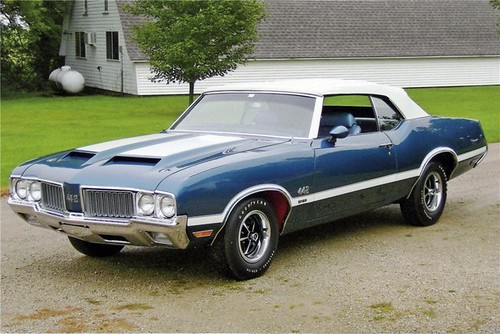
3. **1970 Oldsmobile 442**: The Oldsmobile 442 carved its niche in the muscle car pantheon with a nomenclature that literally described its core performance features: a four-barrel carburetor, a four-speed manual transmission, and dual exhausts. Initially offered as merely a trim level based on the Cutlass, the 442 quickly evolved into Oldsmobile’s flagship muscle car, sharing its robust platform with other General Motors legends such as the Chevrolet Chevelle SS and the Pontiac GTO. This heritage hinted at its serious performance ambitions from the very start.
By 1970, the 442 was much more than just a Cutlass with sporty looks; it was a bona fide performance machine engineered to compete with the best. Buyers could opt for a massive 455-cubic-inch big-block V8 engine, a powerplant that was already formidable in its standard configuration. However, for those seeking the ultimate expression of Oldsmobile muscle, the W30 performance package transformed the 442 into an absolute powerhouse, delivering a stout 360 horsepower and an incredible 500 lb-ft of torque, making it one of the most torquey muscle cars of its time.
Despite its substantial size, the 1970 442 was surprisingly quick, capable of accelerating from 0 to 60 mph in less than six seconds. This was a hugely impressive feat for a car from that era, especially coming from Oldsmobile, a brand often associated more with comfort and luxury than raw street performance. The 442 proved unequivocally that Oldsmobile could not only compete but could stand shoulder-to-shoulder with its more celebrated muscle car brethren. Its unique blend of power, comfort, and reliability made it a truly standout choice for discerning enthusiasts.
The 1970 Oldsmobile 442, particularly with the W30 package, remains one of the most respected muscle cars of its era. It exemplifies a period when Oldsmobile pushed the boundaries of performance and engineering, successfully blending executive luxury with track-ready capability. This specific model, with its potent engine and thoughtful design, continues to be a highly sought-after classic, embodying a rich racing history and a legacy of raw, undeniable power that truly revs the hearts of collectors and fans alike.
Car Model Information: 1969 Oldsmobile 442
Name: Oldsmobile 442
Manufacturer: Oldsmobile
ModelYears: 1964–1980,1985–1987,1990–1991
Class: Muscle car
Layout: FR layout
Caption: 1971 Oldsmobile 442
Categories: 1960s cars, 1970s cars, 1980s cars, All articles with unsourced statements, Articles with short description
Summary: The Oldsmobile 4-4-2 is a muscle car produced by Oldsmobile between the 1964 and 1987 model years. Introduced as an option package for US-sold F-85 and Cutlass models, it became a model in its own right from 1968 to 1971, spawned the Hurst/Olds in 1968, then reverted to an option through the mid-1970s. The name was revived in the 1980s on the rear-wheel drive Cutlass Supreme and early 1990s as an option package for the new front-wheel drive Cutlass Calais.
The “4-4-2” name (pronounced “Four-four-two”) derives from the original car’s four-barrel carburetor, four-speed manual transmission, and dual exhausts. It was originally written “4-4-2” (with badging showing hyphens between the numerals), and remained hyphenated throughout Oldsmobile’s use of the designation. Beginning in 1965, the 4-4-2s standard transmission was a three-speed manual along with an optional two-speed automatic and four-speed manual, but were still badged as “4-4-2″s.
Because of this change, from 1965 on, according to Oldsmobile brochures and advertisements, the 4-4-2 designation referred to the 400 cubic inch engine, four-barrel carburetor, and dual exhausts. By 1968, badging was shortened to simply “442”, but Oldsmobile brochures and internal documents continued to use the “4-4-2” model designation.
Get more information about: Oldsmobile 442
Buying a high-performing used car >>>
Brand: Oldsmobile Model: 442
Price: $43,990 Mileage: 24,000 mi.
Read more about: Unearthing Minnesota’s Automotive Treasures: An In-Depth Look at Its Premier Vintage Truck Collections
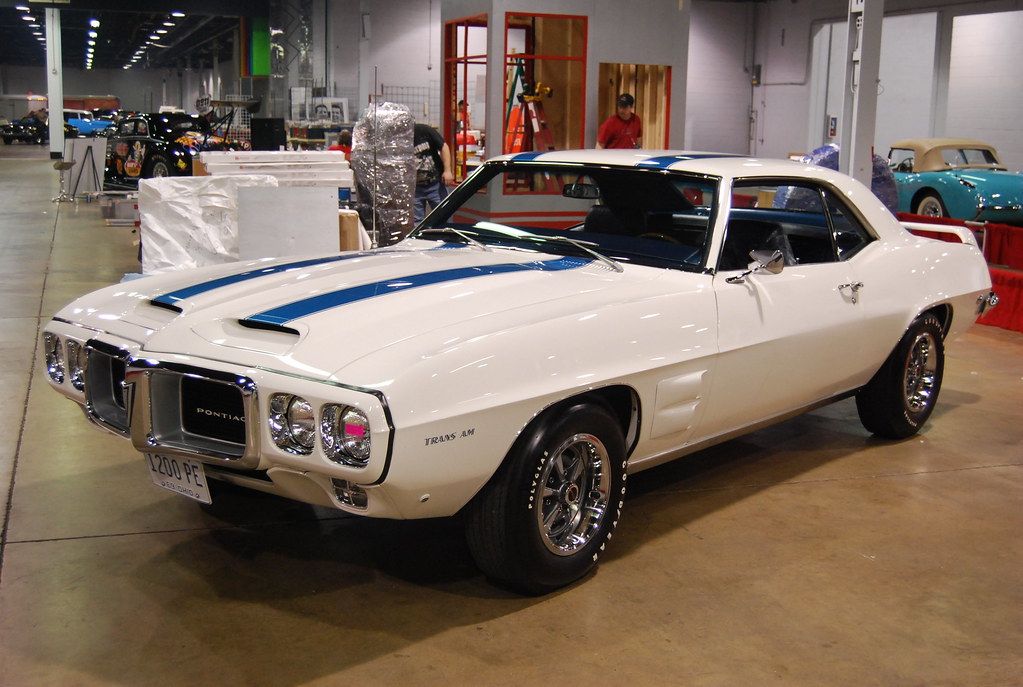
4. **1969 Pontiac Firebird Trans Am**: In an era when General Motors had officially banned factory racing, Pontiac delivered a thinly veiled act of defiance by naming their street car after a prominent racing series: the Trans Am. This move was the automotive equivalent of giving your boss the finger, and it set the stage for a truly unique and rebellious muscle car. All 634 first-year Trans Ams embraced a distinctive and instantly recognizable aesthetic, wearing Polar White paint adorned with bold blue racing stripes—no other color combinations were available, making each one a true statement piece.
More than just a styling exercise, the Trans Am was engineered for genuine performance. It featured functional air dams and spoilers that weren’t merely for show, unlike the fake scoops that often plagued lesser cars of the era. This aerodynamic package actually worked, helping the car cut through the air efficiently while maintaining crucial stability at high speeds. This attention to functional design confirmed that Pontiac’s designers truly understood that form should always follow function, delivering real-world results where it mattered most: on the open road and, implicitly, on the track.
Powering the 1969 Trans Am was a robust 400 cubic inch V8 engine, officially rated at a formidable 366 horsepower, though automotive journalists of the time widely suspected Pontiac was being modest about its true output. What truly set the Trans Am apart from many of its contemporaries wasn’t just its straight-line speed, but its remarkable ability to handle corners—a rare trait among muscle cars of that period. Its upgraded suspension made it one of the most well-rounded performance cars of its era, delivering genuine all-around capability that few could match.
While sub-6-second 0-60 runs were impressive, the Trans Am’s real achievement was its masterful balance of straight-line acceleration with genuine handling prowess. This blend of power and agility created a driving experience that was both thrilling and confidence-inspiring. The 1969 Pontiac Firebird Trans Am, with its bold defiance, functional design, and balanced performance, remains an iconic symbol of an era where automakers pushed boundaries, creating legendary machines that defied corporate restrictions and captured the hearts of enthusiasts.
Car Model Information: 2025 Genesis GV80 3.5T
Name: Pontiac Firebird
Caption: The second, third, and fourth generations of,the Pontiac Firebird Trans Am
Manufacturer: Pontiac (automobile)
Production: February 23, 1967 – August 30, 2002
ModelYears: 1967 – 2002
Class: Pony car,Muscle car
Platform: GM F platform
Related: Chevrolet Camaro
Layout: Front engine, rear-wheel-drive layout
Categories: 1970s cars, 1980s cars, 1990s cars, 2000s cars, All articles with dead external links
Summary: The Pontiac Firebird is an American automobile built and produced by Pontiac from the 1967 to 2002 model years. Designed as a pony car to compete with the Ford Mustang, it was introduced on February 23, 1967, five months after GM’s Chevrolet division’s platform-sharing Camaro. This also coincided with the release of the 1967 Mercury Cougar, Ford’s upscale, platform-sharing version of the Mustang.
The name “Firebird” was also previously used by GM for the General Motors Firebird series of concept cars in the 1950s.
Get more information about: Pontiac Firebird
Buying a high-performing used car >>>
Brand: Pontiac Model: Firebird Trans Am
Price: $63,683 Mileage: 5,413 mi.
Read more about: Beyond the Red Carpet: Dissecting the Iconic Cars Celebrities Drive and the PR Machine Behind Their Public Persona
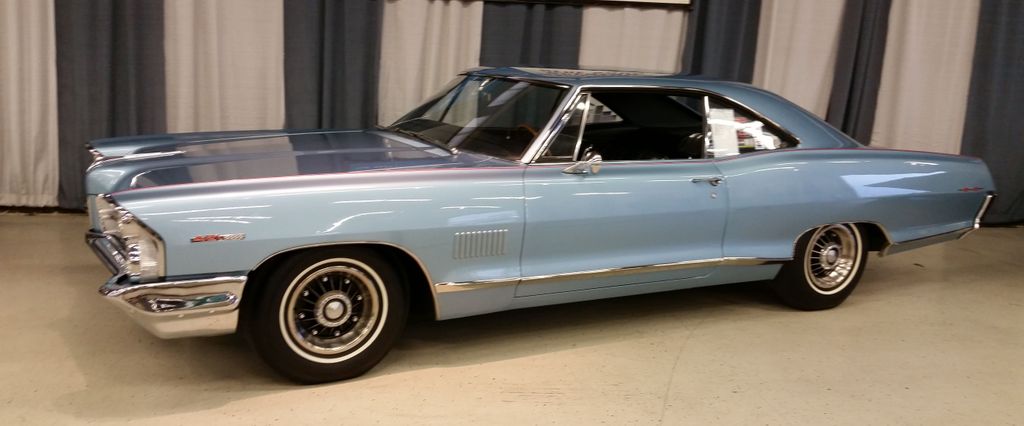
5. **1965 Pontiac Catalina 2+2**: While the GTO is often credited as the original muscle car, Pontiac didn’t stop there; they decided to bring similar high-performance ambitions to their larger, full-size cars. In 1965, the company unveiled the Catalina 2+2, a big and imposing machine that was every bit as serious about performance as its smaller sibling. This often-overlooked model showcased Pontiac’s commitment to power across its entire lineup, proving that a full-size car could also be a formidable contender on the streets.
Under the hood of the Catalina 2+2 resided a massive 421-cubic-inch V8 engine. The standard version of this powerhouse already produced a respectable 338 horsepower, which was more than ample for impressive acceleration. However, for those who craved even more grunt, Pontiac offered the highly desirable 421 H.O. (High Output) version, which pushed output to a more commanding 376 horsepower. This extra surge of power transformed the large Catalina into a genuine threat in the burgeoning muscle car scene, making it a true sleeper among its more compact rivals.
Beyond its formidable engine, the Catalina 2+2 was equipped with a suite of performance-oriented features designed to enhance its aggressive character. These included a heavy-duty suspension system for improved road holding, stylish bucket seats to keep occupants firmly planted, a precise Hurst shifter for engaging gear changes, and unique badging that subtly announced its special status. One of its most distinctive visual cues was its wide, eight-lug wheels, which not only improved stability but also gave it an instantly recognizable and aggressive stance, reinforcing its performance credentials.
Despite its considerable size, the Catalina 2+2 was remarkably fast, especially when subjected to the expert tuning provided by specialists like Royal Pontiac. This dealership and tuning shop in Michigan had a special connection with Pontiac, often modifying test cars sent to automotive journalists, making them significantly quicker than their factory-stock counterparts. This partnership added another layer to the Catalina 2+2’s legend, underscoring its raw potential. Today, this powerful, full-size performance machine remains a rare and respected piece of Pontiac’s muscle car history, a testament to the brand’s expansive vision of performance.
Car Model Information: 2025 Genesis GV80 3.5T
Name: Pontiac 2+2
Caption: 1965 Pontiac 2+2 Sports Coupe
Aka: Parisienne 2+2 (Canada)
Manufacturer: Pontiac (automobile)
Class: Full-size car
Production: 1964—1967 in the U.S.
Assembly: Pontiac Assembly,Pontiac, Michigan,Arlington Assembly,Arlington, Texas,Doraville Assembly,Doraville, Georgia,Fairfax Assembly,Kansas City, Kansas,Linden Assembly,Linden, New Jersey,South Gate Assembly,South Gate, California
BodyStyle: coupe,convertible
Engine: Pontiac V8 engine#389
Transmission: 3 or 4-speed manual, 3-speed automatic
Length: 214 in
Abbr: on
Height: 48 in
Wheelbase: 121 in
Related: Pontiac Catalina
Categories: 1970s cars, 2+2 coupés, All articles with unsourced statements, Articles with short description, Articles with unsourced statements from March 2017
Summary: The Pontiac 2+2 is a full size automobile that was manufactured by Pontiac, built on the B-body chassis. It debuted for the 1964 model year as a trim-only option for the Pontiac Catalina, with special door panels, bucket seats with a center console, and exterior badging. Pontiac marketed the 2+2 as the “big brother” to the popular Pontiac GTO.
Beginning in 1965 the name Catalina was no longer found on the car, although it was still an option on the Catalina. The 2+2 was equipped with a 421 cu in (6.9 L) V8 engine, dual exhaust, heavy-duty front springs as well as unique exterior body trim. It continued on the same platform, but became a separate Pontiac series for the 1966 model year. The 2+2 reverted to an option on the Catalina for 1967 and was discontinued in the United States the same year due to poor sales.
It continued as a series in Canada until 1970. All Canadian-built 2+2s were equipped with a Pontiac body on a Chevrolet chassis, with the full range of Chevrolet engines available from inline 6-cylinder to big-block V8.
The name 2+2 reappeared briefly in 1986 on the Pontiac Grand Prix 2+2 G-body “aerobody” coupe, of which 1,225 were built.
Get more information about: Pontiac 2+2
Buying a high-performing used car >>>
Brand: Pontiac Model: Catalina 2+2
Price: $63,683 Mileage: 5,413 mi.
Read more about: The Great Automotive Shake-Up: 15 Brands Navigating the U.S. Market’s Shifting Sands
6. **1970 Chrysler 300 Hurst**: The 1970 Chrysler 300 Hurst stands as a unique blend of executive luxury and unadulterated muscle, a rare offering in a marketplace often bifurcated between opulent cruisers and raw street brawlers. Limited to a mere 500 units, this special edition featured a distinctive Spinnaker White and Gold paint scheme, complemented by exclusive Hurst badging. This wasn’t a car designed for subtle automotive expression; Chrysler explicitly wanted everyone to recognize that this was something truly special, a luxury muscle car tailored for buyers who demanded both supreme comfort and exhilarating performance.
The striking two-tone paint scheme of the 300 Hurst exuded an air of executive privilege, artfully wrapped around an uncompromising performance attitude. Chrysler’s designers masterfully understood that a luxury muscle car needed to visually differentiate itself from the more common, no-frills street brawlers. They crafted a visual package that effortlessly suggested both boardroom meetings and thrilling weekend track days, achieving a rare aesthetic balance that appealed to a sophisticated yet speed-hungry clientele.
Beneath its elegant exterior, the 300 Hurst housed a powerful 440 cubic inch V8 engine, which generated a robust 375 horsepower. This impressive powerplant propelled a vehicle weighing over 4,200 pounds—a mass comparable to a modern SUV—with surprising agility. Despite its considerable bulk, the 300 Hurst was capable of running low 14-second quarter-miles, all while its passengers luxuriated in premium comfort features. This combination of speed and luxury was almost unheard of in the muscle car segment, setting it apart from its peers.
The 1970 Chrysler 300 Hurst represented a unique proposition in the muscle car marketplace, demonstrating that one could indeed have the best of both worlds: executive luxury seamlessly merged with serious, pavement-shredding performance. It proved that compromise was not always necessary, as long as one was willing to pay the premium for such an exclusive blend of attributes. This rare and distinctive machine continues to capture the imagination of collectors, embodying an era when Chrysler dared to infuse high-end comfort with pure muscle car adrenaline.
The initial skirmishes in Detroit’s horsepower wars were just the beginning. As the muscle car era evolved, engineers continued to push boundaries, sometimes in unexpected ways, delivering machines that defied conventions and etched their names into automotive lore. From turbocharged V6 powerhouses to purpose-built NASCAR conquerors and refined pony cars, these next six entries further illustrate the diverse ingenuity that defined American muscle. They are a testament to an era where ambition met engineering, creating icons that continue to captivate enthusiasts decades later. We continue our journey into the fascinating world of these legendary, yet often overlooked, American muscle cars.
Car Model Information: 2025 Genesis GV80 3.5T
Name: Chrysler 300 letter series
Caption: 1964 Chrysler 300-K Coupe
Class: Personal luxury car,Muscle car,Grand tourer
Manufacturer: Chrysler Corporation
Production: 1955–1965,1970
Assembly: Detroit,Michigan
Layout: Front-engine, rear-wheel-drive layout
Predecessor: Chrysler Saratoga
Successor: Chrysler 300 non-letter series
Categories: 1950s cars, 1960s cars, All Wikipedia articles written in American English, All articles containing potentially dated statements, All articles with unsourced statements
Summary: The Chrysler 300 “letter series” are high-performance personal luxury cars that were built by Chrysler in the U.S. from 1955 to 1965 and were a sub-model from the Chrysler New Yorker. After the initial year, which was named C-300 for its standard 300 hp (220 kW) 331 cu in (5.4 L) FirePower V8, the 1956 cars were designated 300B. Successive model years were given the next letter of the alphabet as a suffix (skipping “i”), reaching the 300L by 1965, after which the model sequence was discontinued while the “300” remained. At its introduction it was advertised as “America’s Most Powerful Car”.
The 300 “letter series” cars were among the vehicles built by Chrysler after World War II that focused on performance, and thus can be considered the beginning of the muscle car, though full-sized and more expensive. Chrysler had a long history of producing race car products going back to the Chrysler Six that was entered in the 1925 24 Hours of Le Mans, 1928 24 Hours of Le Mans, 1929 24 Hours of Le Mans, and the Chrysler Imperial Eight roadster in the 1931 24 Hours of Le Mans. The 1955 C-300 and the 1956 300B were raced with very little modification at NASCAR races to include Watkins Glen International where it won races multiple times.
The automaker reintroduced the 300 designations again for performance-luxury sedans in 1999, using the 300M nameplate from 1999 to 2004, and expanding the 300 series with a reintroduction of a new Hemi-engineered V8 installed in the 300C, the top model of a new Chrysler 300 line, a new rear-wheel drive car launched in 2004 for the 2005 model year.
Get more information about: Chrysler 300 letter series
Buying a high-performing used car >>>
Brand: Chrysler Model: 300 Hurst
Price: $63,683 Mileage: 5,413 mi.
Read more about: Beyond the Hype: 15 Classic Cars That Will Break Your Heart (and Wallet) – A Jalopnik Guide for Enthusiasts
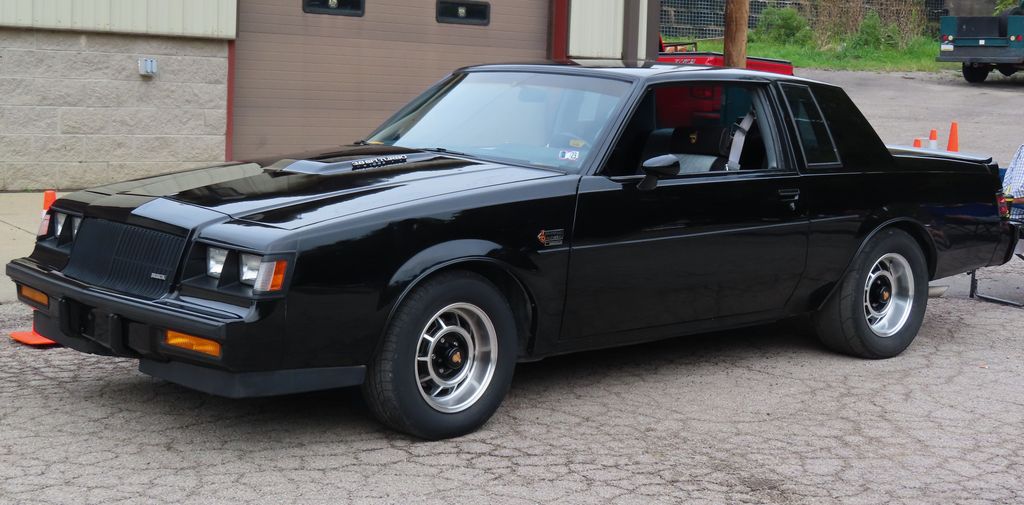
7. **1987 Buick GNX**While the muscle car scene of the 1960s and 1970s was dominated by thundering V8s, the landscape changed dramatically by the 1980s. High-powered machines had largely faded, victims of new emissions regulations, soaring gas prices, and prohibitive insurance costs. Yet, against this backdrop of declining performance, Buick dared to rekindle some of that raw excitement, not with a traditional V8, but with an unexpected turbocharged V6 engine that redefined what muscle could be.
The Buick GNX, a special iteration of the already potent Grand National, emerged as a true muscle car for a new decade. Building upon the Grand National’s impressive 245-horsepower V6 engine, the GNX package significantly boosted output to a formidable 276 horsepower. This substantial increase in power delivered incredible acceleration, swiftly establishing the GNX as one of the fastest production cars of its time, turning heads and challenging preconceived notions of performance.
In a testament to its prowess, a 1987 Car and Driver test recorded a blistering 0-to-60-mph time of just 4.6 seconds for the GNX. Such performance was astonishing, outperforming many contemporary sports cars and solidifying its reputation as far more than just a stylish coupe. Buick’s bold embrace of forced induction proved that a V6 could indeed deliver the exhilarating speed and torque traditionally associated with much larger V8s.
Buick’s commitment to exclusivity meant only 547 of these powerful machines were ever produced. This limited run immediately positioned the GNX as a highly collectible item, with many astute buyers recognizing its intrinsic value early on and opting to store them away as future investments. Their foresight has paid off, as pristine examples of the GNX command premium prices from collectors today.
Adding another intriguing chapter to its story, a number of the specialized turbo V6 engines destined for the GNX remained after production concluded. Rather than allowing these engineering marvels to go unused, Pontiac ingeniously repurposed them for the 1989 20th Anniversary Trans Am. Although officially rated at a conservative 250 horsepower in the Trans Am, true car enthusiasts understood the engine’s greater potential, making that model another rare and exciting find for those in the know. The 1987 Buick GNX stands as an enduring legend, a powerful symbol of 1980s American performance that proved a V8 wasn’t the only path to muscle car glory.
Read more about: Beyond the Garage: The 12 Most Impressive Celebrity Car Collections Ranked and Revealed
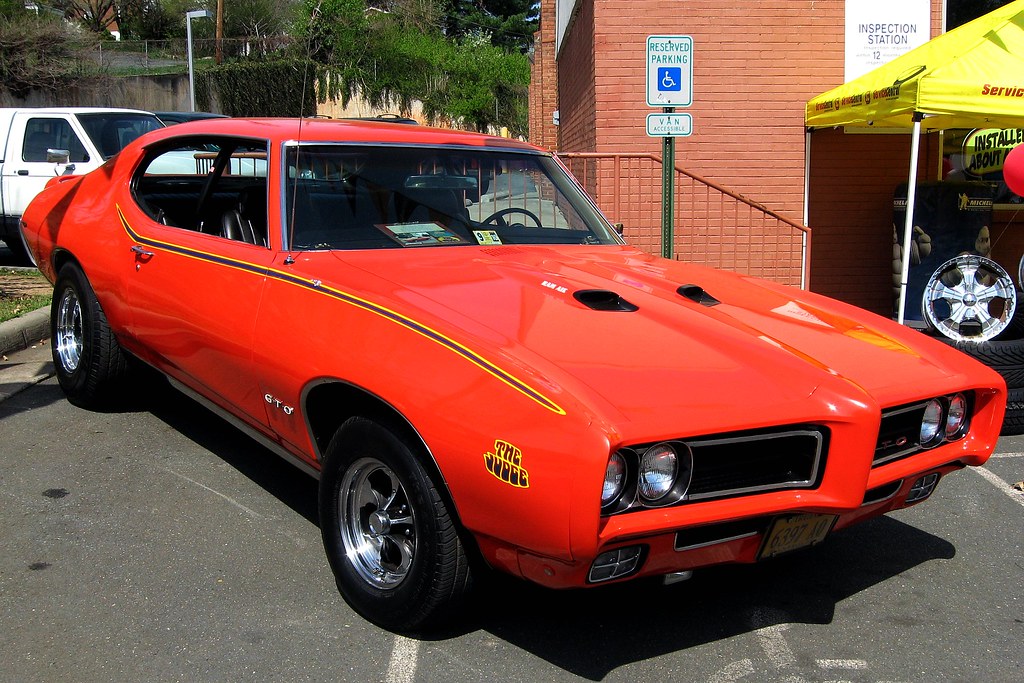
8. **1969 Pontiac GTO Judge**Pontiac had already cemented its legacy in the early 1960s, with the 1964 GTO widely acknowledged as the progenitor of the muscle car genre. However, by 1968, the burgeoning competition necessitated a fresh approach. The initial concept for a new GTO involved a budget-friendly version equipped with a smaller 350-cubic-inch engine—a notion swiftly rejected by Pontiac’s visionary top executive, John DeLorean, who firmly believed a GTO should always prioritize power.
DeLorean’s conviction led to an entirely different strategy: instead of a cheaper variant, Pontiac opted to create an upgraded GTO. This enhanced model was personally christened “The Judge” by DeLorean himself, a playful nod to a popular comedy skit from the then-hit TV show, Rowan & Martin’s Laugh-In. The name perfectly captured the car’s bold and audacious personality, instantly differentiating it from its contemporaries.
Standard with The Judge was a robust 360-horsepower Ram Air III engine, providing ample speed and formidable power to dominate the streets. For those discerning enthusiasts who demanded the absolute pinnacle of performance, Pontiac offered the even more potent Ram Air IV engine, which pushed output to a commanding 370 horsepower. The rarest and most coveted models were the Ram Air IV convertibles; only five were produced in 1969, making them exceptionally valuable collector’s items today.
Beyond its raw performance, The Judge was also a masterpiece of marketing. Pontiac crafted a memorable television commercial featuring the iconic rock band Paul Revere and the Raiders, performing a lively song about the GTO on a picturesque dry lakebed. The band’s lead singer, Mark Lindsay, a devoted car enthusiast, was so enamored with The Judge that he wrote the song himself. Many automotive historians even credit this groundbreaking commercial as one of the earliest rock music videos ever produced, showcasing the GTO’s pervasive cultural impact.
Today, the 1969 Pontiac GTO Judge maintains its revered status as one of the most iconic muscle cars of its era. With its distinctive styling, a choice of powerful engines, and a truly unique name rooted in pop culture, it stands out as an undeniable legend in the rich tapestry of American automotive history. Its enduring appeal lies not just in its performance, but in its audacious spirit and the captivating story behind its creation.
Car Model Information: 1966 Pontiac GTO Coupe
Name: Pontiac GTO
Caption: 2005 Pontiac GTO
Manufacturer: Pontiac (automobile),Holden
Class: Mid-size car,Compact car,Mid-size car
Production: 1963–1974,2003–2006
Predecessor: Pontiac Tempest
Layout: Front-engine, rear-wheel-drive layout
ModelYears: 1964-1974 2004-2006
Categories: 1970s cars, 2000s cars, All articles with unsourced statements, Articles with short description, Articles with unsourced statements from October 2008
Summary: The Pontiac GTO is a front-engine, rear-drive, two-door, and four-passenger automobile manufactured and marketed by the Pontiac division of General Motors over four generations from 1963 until 1974 in the United States — with a fifth generation made by GM’s Australian subsidiary, Holden, for the 2004 through 2006 model years.
The first generation of the GTO is credited with popularizing the muscle car market segment in the 1960s. Some consider the Pontiac GTO to have started the trend with all four domestic automakers offering a variety of competing models.
For the 1964 and 1965 model years, the GTO was an optional package on the intermediate-sized Pontiac LeMans. The 1964 GTO vehicle identification number (VIN) started with 22, while the 1965 GTO VIN began with 237. The GTO was designated as a separate Pontiac model from 1966 through 1971 (VIN 242…). It became an optional package again for the 1972 and 1973 intermediate LeMans. For 1974, the GTO was an optional trim package on the compact-sized Ventura.
The GTO model was revived for the 2004 through 2006 model years as a captive import for Pontiac, a left-hand drive version of the Holden Monaro, itself a coupé variant of the Holden Commodore.
Get more information about: Pontiac GTO
Buying a high-performing used car >>>
Brand: Pontiac Model: GTO
Price: $59,991 Mileage: 4,408 mi.
Read more about: All Looks, No Power: A Critical Review of Muscle Cars That Failed to Deliver on Their Roaring Promise
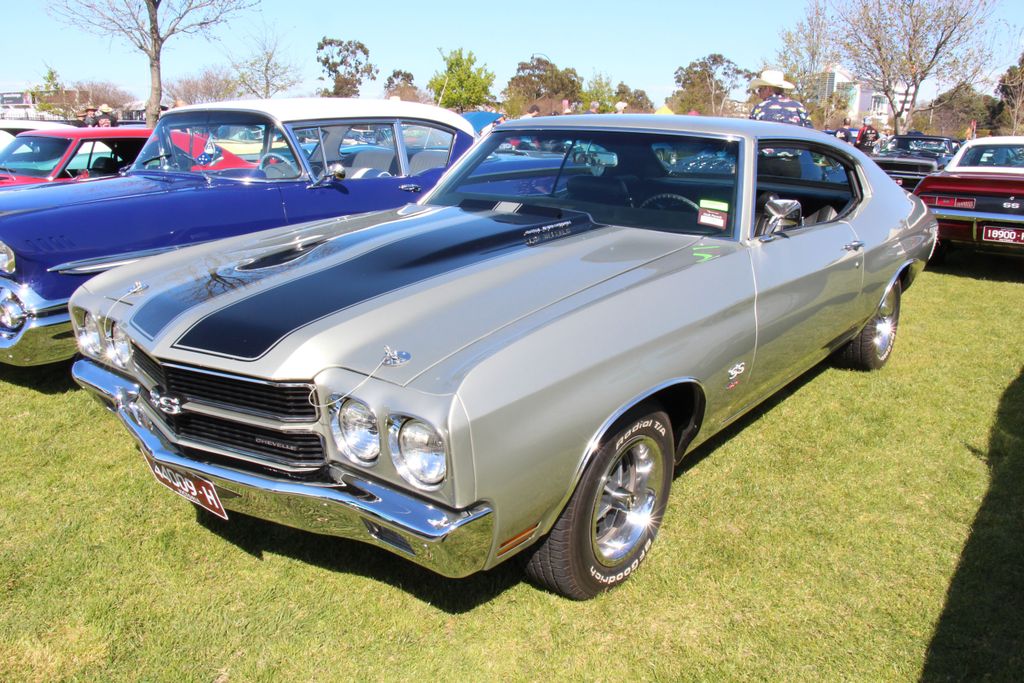
9. **1970 Chevrolet Chevelle SS LS6**The muscle car landscape underwent a seismic shift when General Motors (GM) rescinded its corporate rule that had previously restricted midsize cars to engines no larger than 400 cubic inches. This policy change ignited an immediate and fierce horsepower war across GM’s divisions, with each brand scrambling to shoehorn their largest, most powerful engines into their top-tier muscle cars. Oldsmobile responded by equipping the 442 with a massive 455-cubic-inch V8, while Chevrolet unleashed its own beast: the Chevelle SS, powered by the mighty 454-cubic-inch LS6 engine.
The LS6 engine was, without question, one of the most formidable powerplants ever to grace an American muscle car. Chevrolet conservatively rated its output at 450 horsepower and an earth-shaking 500 lb-ft of torque. However, given its high 11.25:1 compression ratio and the prodigious fuel delivery from its large Holley 780 CFM carburetor, many automotive experts and enthusiasts widely believed that the LS6’s actual horsepower was closer to a staggering 500. This made the LS6 Chevelle SS an absolute monster on the road, capable of outperforming almost anything else on the street.
Performance figures from the era vividly illustrate the LS6’s capabilities. In 1970, Car and Driver magazine put a Chevelle SS LS6 through its paces, recording an astonishing 0-to-60-mph sprint in just 5.4 seconds. It devoured the quarter-mile in a blistering 13.8 seconds—times that remain deeply impressive even by today’s standards. These remarkable achievements were accomplished using the relatively narrow, low-grip tires available in 1970, hinting at the even greater potential the LS6 Chevelle would unlock if equipped with modern, high-performance rubber.
One particularly interesting aspect of the LS6’s introduction was its defiance of GM’s unwritten rule, which typically ensured the Chevrolet Corvette remained the brand’s most powerful offering. Prior to 1970, no Chevrolet production car was permitted to boast more horsepower than the Corvette. In 1970, the Corvette’s most powerful engine, the LS5 454, made only 390 horsepower. While Chevrolet had planned an even more potent LS7 engine with 465 horsepower, it was never officially released, leaving the Chevelle SS LS6 to momentarily claim the horsepower crown within the Chevrolet lineup.
Though the LS6 engine was briefly offered in the 1971 Corvette, its power was intentionally detuned to 425 horsepower, reinforcing the brand hierarchy. Despite this brief reign at the top, the 1970 Chevrolet Chevelle SS LS6 remains one of the most legendary and intensely sought-after muscle cars ever built, a powerful testament to a fleeting moment when an uncompromising spirit of performance took center stage.
Car Model Information: 2025 Genesis GV80 3.5T
Name: Chevrolet Chevelle
Caption: 1970 Chevrolet Chevelle SS 396 Sport Coupe
Manufacturer: Chevrolet
Production: 1963–1977
ModelYears: 1964–1977
Class: Mid-size
Platform: GM A platform (RWD)
Layout: FR layout
Successor: Chevrolet Malibu
Categories: 1970s cars, All articles needing additional references, All articles that may contain original research, All articles with specifically marked weasel-worded phrases, All articles with unsourced statements
Summary: The Chevrolet Chevelle is a mid-sized automobile that was produced by the Chevrolet division of General Motors (GM) in three generations for the 1964 to 1977 model years. Part of the GM A-body platform, the Chevelle was one of Chevrolet’s most successful nameplates. Body styles included coupes, sedans, convertibles, and station wagons. The “Super Sport” versions were produced through the 1973 model year and Lagunas from 1973 through to 1976.
After a four-year absence, the El Camino was reintroduced as part of the new Chevelle lineup in 1964.
From 1964 to 1969, GM of Canada sold a modified version of the Chevelle that included a Pontiac-style grille, and a LeMans instrument panel, marketed as the Beaumont.
The Malibu was the top-of-the-line model to 1972, and completely replaced the Chevelle nameplate starting with the redesigned, and downsized 1978 model year.
Get more information about: Chevrolet Chevelle
Buying a high-performing used car >>>
Brand: Chevrolet Model: Chevelle SS
Price: $63,683 Mileage: 5,413 mi.
Read more about: The Unvarnished Truth: 15 Cars That Left Owners Fuming With Performance Failures and Reliability Nightmares
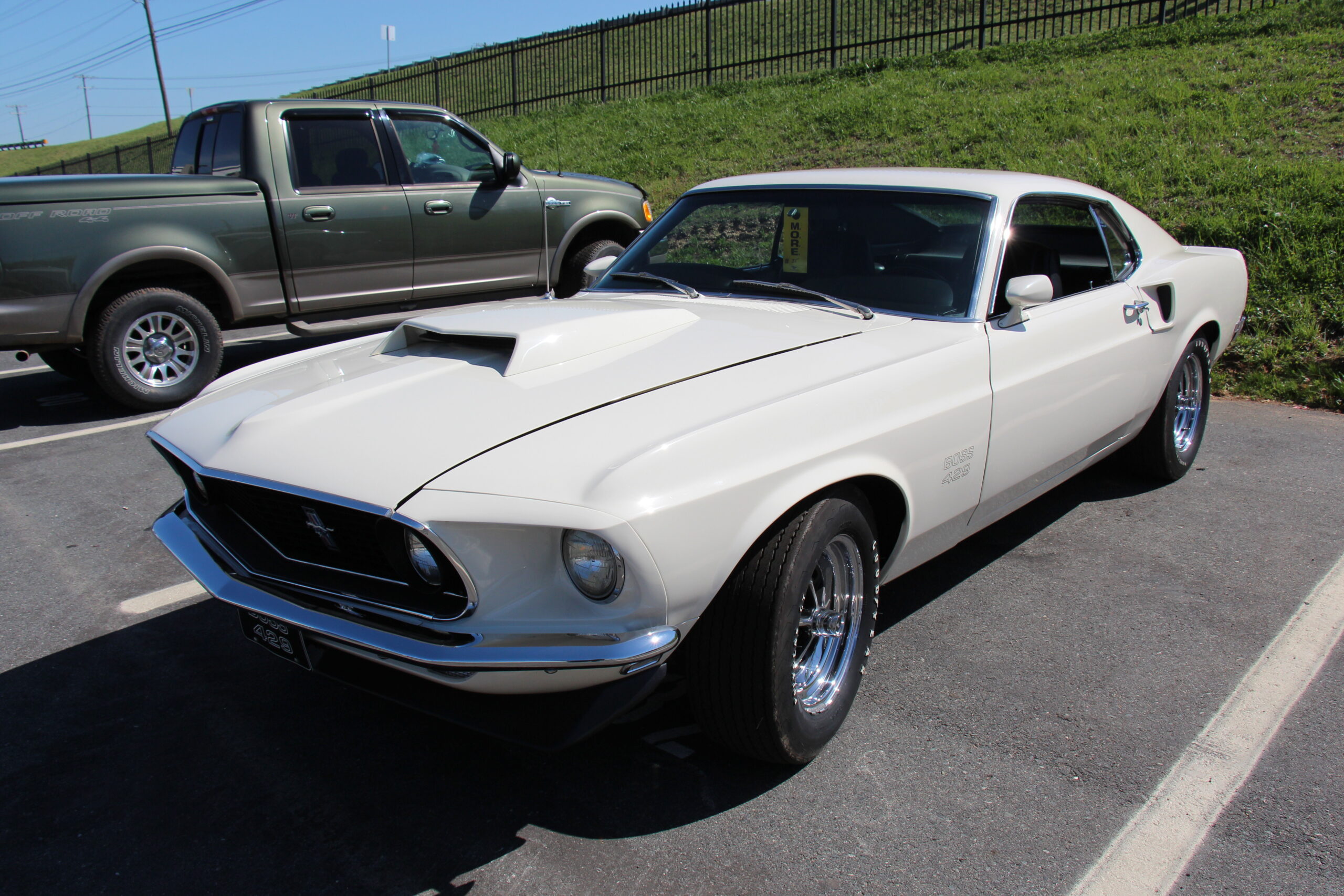
10. **1969-1970 Ford Mustang Boss 429**The late 1960s and early 1970s marked the zenith of NASCAR, a fiercely competitive era that drove carmakers to develop extreme engines and radical designs for racing superiority. To qualify these purpose-built race cars for competition, NASCAR mandated that manufacturers sell at least 500 street versions. This rule sparked the creation of some truly wild and unforgettable machines. While the Mustang itself wasn’t a direct competitor in NASCAR, it became the unlikely recipient of an engine explicitly designed for the sport’s high-speed demands.
The Boss 429 Mustang was essentially a Mustang chassis built around a gargantuan 429-cubic-inch V8 engine, specifically conceived for NASCAR’s super speedways. This engine, conservatively rated at 375 horsepower, was capable of revving up to 6000 rpm. However, its sophisticated, race-bred nature meant it didn’t always translate into stellar performance on the street. In fact, many period tests revealed it to be slower in straight-line acceleration than other big-block Mustangs of the era, which made it a less intuitive choice for casual drivers expecting raw, immediate grunt.
Fitting such a colossal engine into the Mustang’s relatively compact engine bay presented a monumental engineering challenge. The stock Mustang’s architecture was simply too small. To overcome this, Ford enlisted the expertise of Kar Kraft, a specialized company based in Brighton, Michigan, to extensively modify each Mustang. Their work involved relocating the shock towers, widening the front track, moving the battery to the trunk for better weight distribution, and installing a smaller brake booster to accommodate the massive V8. These intricate modifications were essential but inherently altered the car’s original handling characteristics.
Because of its unique, homologation-special engine and the extensive, handcrafted modifications required for its assembly, the Boss 429 became one of the rarest and most valuable Mustangs ever produced. Today, it is a highly coveted classic, with auction prices frequently surpassing $200,000. Collectors and enthusiasts alike deeply admire its direct racing heritage and the remarkable engineering ingenuity that went into making such an ambitious project a street-legal reality, even with its quirks.
Throughout its limited production run, Ford utilized three distinct versions of the 429 engine. Early models featured the “S-Code,” built with high-performance components but plagued by reliability concerns. To address these issues, Ford introduced the “T-Code,” a slightly less aggressive iteration that offered improved durability. Toward the very end of its production, the “A-Code” appeared, incorporating smog equipment and a revised valvetrain, making it the most refined version, albeit during a period of shifting automotive priorities. Each variant tells a part of the Boss 429’s complex and captivating story.
Car Model Information: 2025 Genesis GV80 3.5T
Caption: 1969 Boss 429
Layout: Longitudinal engine
Manufacturer: Ford Motor Company
Production: 1969–1970
Name: Mustang Boss 429
Class: Muscle car
BodyStyle: coupé
Assembly: Dearborn, Michigan
Height: 50.4 in
Abbr: on
Length: 187.4 in
Width: 71.7 in
Engine: 429 cuin
Transmission: manual transmission
Weight: 3870 lb
Categories: All Wikipedia articles needing clarification, All articles needing additional references, All articles with unsourced statements, Articles needing additional references from August 2008, Articles with short description
Summary: The Boss 429 Mustang is a high-performance Ford Mustang variant that was offered by Ford in 1969 and 1970. It featured a race-designed 429 cu in (7.0 L) semi-hemispherical head version of the big block 429 V8, offered in the car both to homologate the engine for NASCAR racing and to offer a bigger, more-powerful version of the popular small block 5 L Boss 302 Mustang.
The price of all the performance and modifications was steep: at nearly $5,000 a Boss 429 was roughly twice the price of the base model inline-6 Mustang. A total of 1,359 Boss 429s were produced.
Get more information about: Boss 429 Mustang
Buying a high-performing used car >>>
Brand: Ford Model: Mustang Boss 429
Price: $63,683 Mileage: 5,413 mi.
Read more about: The Ultimate Air Intake: 11 Classic Cars That Flaunted the Hood Scoop Look
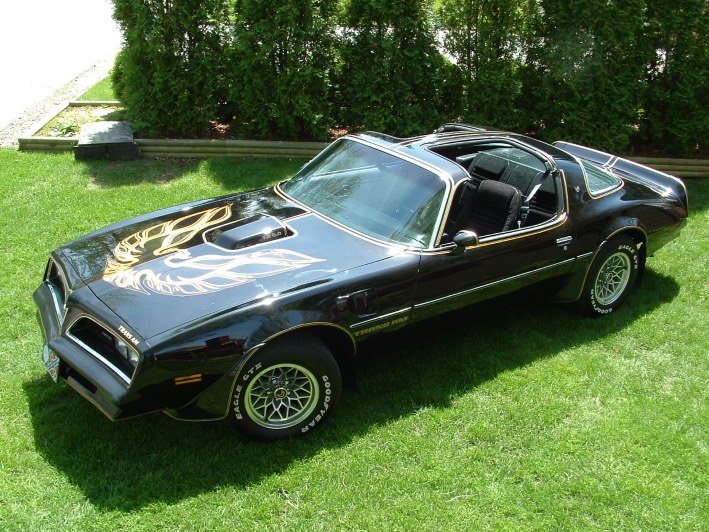
11. **1978 Pontiac Trans Am**By the late 1970s, the golden age of muscle cars had long passed, and the performance landscape looked dramatically different from its earlier, unrestrained glory. New emissions regulations, steadily climbing gas prices, and increasingly expensive insurance premiums forced automakers to significantly reduce horsepower across the board. Many once-mighty muscle cars lost their performance edge, leaving enthusiasts yearning for the thrills of yesteryear. Yet, in a defiant stand against this industry-wide trend, Pontiac steadfastly refused to let the Trans Am succumb, consistently keeping it an exciting and capable machine.
The Trans Am had already achieved widespread popularity, propelled into the cultural zeitgeist by its starring role in the iconic movie *Smokey and the Bandit*. To maintain this momentum and keep the excitement alive, Pontiac engineers continued to refine and even boost the power of its top-level Trans Am for the 1978 model year. The car’s horsepower subtly but importantly increased from 200 to 220, making it one of the rare muscle cars that actually gained strength during this challenging period of performance decline, a testament to Pontiac’s commitment.
Pontiac also demonstrated a keen understanding that true performance extended beyond just straight-line speed. To enhance the car’s overall driving dynamics, they introduced the highly effective WS6 handling package. This comprehensive upgrade included a sport-tuned suspension, wider 8-inch wheels, improved tires, and a quicker steering ratio. These thoughtful changes transformed the Trans Am into a genuinely agile performer, capable of handling corners with a finesse that, impressively, often surpassed even the Chevrolet Corvette of the same era. It was a significant achievement in an age when performance was often an afterthought.
Another iconic feature that further distinguished the 1978 Trans Am was its innovative T-top roof. This popular option, available since 1976, provided the closest experience to a convertible model without sacrificing structural rigidity. The earliest T-tops, initially supplied by Hurst and known as the Hurst Hatch, were unfortunately notorious for their tendency to leak. Recognizing this flaw, Pontiac proactively developed its own superior T-top design through General Motors’ Fisher body division, addressing the problem head-on.
Because the new Fisher T-tops were introduced mid-way through the 1978 model year, a fascinating detail for collectors is that some Firebirds from that year are equipped with the earlier Hurst T-tops, while others feature the improved Fisher design. The difference is discernible: Fisher T-top panels are notably larger than their Hurst counterparts. Today, the 1978 Trans Am endures as a legendary muscle car, a powerful symbol of resilience and continued excitement that defied the prevailing winds of automotive change in a challenging decade.
Car Model Information: 2025 Genesis GV80 3.5T
Name: Pontiac Firebird
Caption: The second, third, and fourth generations of,the Pontiac Firebird Trans Am
Manufacturer: Pontiac (automobile)
Production: February 23, 1967 – August 30, 2002
ModelYears: 1967 – 2002
Class: Pony car,Muscle car
Platform: GM F platform
Related: Chevrolet Camaro
Layout: Front engine, rear-wheel-drive layout
Categories: 1970s cars, 1980s cars, 1990s cars, 2000s cars, All articles with dead external links
Summary: The Pontiac Firebird is an American automobile built and produced by Pontiac from the 1967 to 2002 model years. Designed as a pony car to compete with the Ford Mustang, it was introduced on February 23, 1967, five months after GM’s Chevrolet division’s platform-sharing Camaro. This also coincided with the release of the 1967 Mercury Cougar, Ford’s upscale, platform-sharing version of the Mustang.
The name “Firebird” was also previously used by GM for the General Motors Firebird series of concept cars in the 1950s.
Get more information about: Pontiac Firebird
Buying a high-performing used car >>>
Brand: Pontiac Model: Trans Am
Price: $63,683 Mileage: 5,413 mi.
Read more about: Unearthing Minnesota’s Automotive Treasures: An In-Depth Look at Its Premier Vintage Truck Collections
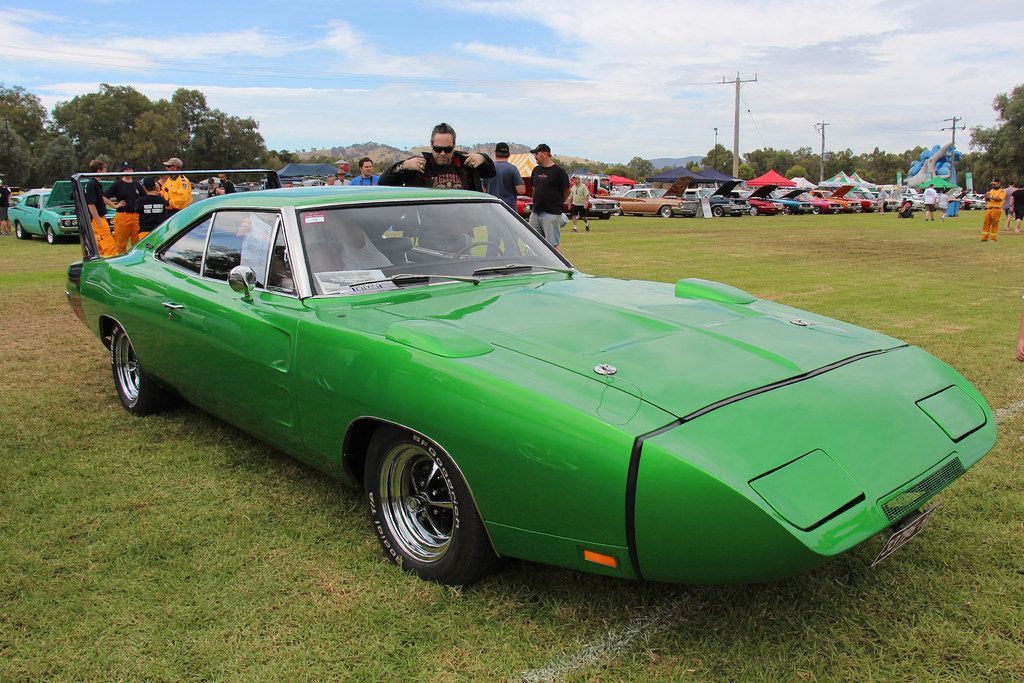
12. **1969 Dodge Charger Daytona**The 1969 Dodge Charger Daytona, along with its close sibling, the 1970 Plymouth Superbird, represents some of the most audacious and visually striking muscle cars ever conceived. While the majority of muscle cars of the era were primarily designed for street racing or drag strip dominance, the Daytona had a singular, unwavering purpose: to conquer and dominate NASCAR’s fastest tracks. Its very name, derived from the legendary Daytona International Speedway, a circuit synonymous with extreme high-speed racing, perfectly encapsulated its ambitious mission.
To achieve unprecedented levels of speed and stability, Dodge engineers subjected the car to rigorous wind tunnel testing, implementing several groundbreaking aerodynamic improvements. The result was a distinctive long, sloped nose cone designed to dramatically reduce air resistance, coupled with a large, flush-mounted rear window for optimized airflow. However, the most universally recognizable and eye-catching feature was undoubtedly its nearly 2-foot-tall rear wing, a towering appendage meticulously engineered to generate crucial downforce and maintain exceptional stability at triple-digit speeds.
The race version of the Daytona etched its name in history by becoming the first NASCAR car to officially exceed the formidable 200 mph barrier. Its success on the track was immediate and overwhelming, clinching multiple victories in 1969. When Plymouth introduced the Superbird in 1970, boasting similar radical aerodynamic enhancements, it too quickly became a winning machine. However, the sheer dominance of these “winged warriors” eventually drew the ire of NASCAR officials, leading to a significant rule change in 1971 that effectively banned them from competition, a testament to their overwhelming effectiveness.
The production versions of the Daytona, while intended for homologation, were no less impressive, offering extreme performance for the road. Buyers could choose between the potent 440-cubic-inch big-block V8 or the legendary 426 Hemi engine, both delivering exhilarating power. With Hemi-powered versions capable of hitting 60 mph in approximately 5.7 seconds, this was remarkable performance for a full-sized car adorned with such a massive wing. Today, these highly distinctive cars are exceptionally valued by collectors, often commanding prices upwards of $150,000 at auction, their rarity and race heritage ensuring their continued allure.
An intriguing legend surrounds the exaggerated height of the Daytona’s rear wing. While some believed its imposing stature was solely for optimal aerodynamic efficiency, a popular theory suggests a more practical, if less glamorous, reason. The wing was reportedly made tall enough to allow the trunk lid to open fully on the production models, ensuring usability despite its extreme design. Whether intentional or a happy accident, this distinctive design element undoubtedly contributed to making the Daytona one of the most iconic and instantly recognizable muscle cars in automotive history, a car that truly embodied the spirit of pushing boundaries for victory.
Car Model Information: 2025 Genesis GV80 3.5T
Name: Dodge Charger Daytona
Caption: 1969 Dodge Charger Daytona
Manufacturer: Dodge
Production: 1969–1970,2006–2009,2013,2017–2023
Class: Muscle car
Layout: FR layout
Categories: 1960s cars, 1970s cars, 2000s cars, All articles needing additional references, All articles with unsourced statements
Summary: Dodge produced three separate models with the name Dodge Charger Daytona, all of which were modified Dodge Chargers. The name was taken from Daytona Beach, Florida, which was an early center for auto racing and still hosts the Daytona 500, NASCAR’s premier event. The original Dodge Charger Daytona was designed to beat the competition in NASCAR racing. It was the first NASCAR vehicle to reach 200 miles per hour, which was a major milestone at the time.
Get more information about: Dodge Charger Daytona
Buying a high-performing used car >>>
Brand: Dodge Model: Charger Daytona
Price: $63,683 Mileage: 5,413 mi.
Read more about: Buyer Beware: 14 Cars Notorious for Breaking Down Prematurely, Especially After 100,000 Miles
As we conclude our exploration of these legendary, and sometimes overlooked, American muscle cars, it becomes abundantly clear that the era was far more diverse and innovative than often remembered. From the audacious engineering of factory drag cars to the defiant spirit of homologation specials, and the surprising evolution of luxury performance, each vehicle tells a unique story of ambition, ingenuity, and a relentless pursuit of speed. These machines, whether limited-production wonders or subtle sleepers, represent the pinnacle of an intensely competitive time in automotive history. They remind us that true legends are not always the loudest or most celebrated, but often those that dared to be different, leaving an indelible mark on car culture that continues to rev the hearts of enthusiasts around the globe. They are more than just cars; they are vibrant artifacts of a bygone era, waiting to be rediscovered and revered for their enduring legacy.


